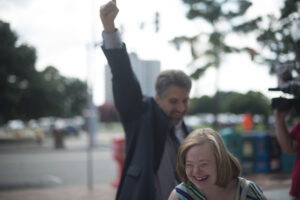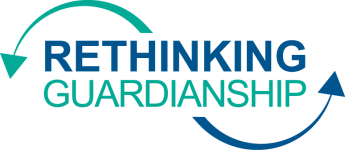Guest Blogger: Jonathan Martinis, Esq., J.D., Rethinking Guardianship Consultant
Here’s something we know from decades of studies: students with disabilities who have more self-determination — who make more decisions and have more control over their lives — have better lives. They’re more likely to do well in school and more likely to live independently and work after they leave school.[1] That’s why self-determination is “the ultimate goal” of Special Education.[2]
Here’s something else we know from years of research: parents are most likely to learn about guardianship and be encouraged to seek it by school personnel.[3] As the National Council on Disability says, there is a “School to Guardianship Pipeline.”[4]
Of course, for people who truly can’t make decisions for themselves, guardianship can be a good thing. But, when guardianship is unnecessary — when people can make decisions, independently or when they get help — it can have a “significant negative impact on their physical and mental health.”[5]
So, given what we know, here’s what we need: a way to empower students with disabilities to build self-determination and make their own decisions to the maximum of their abilities, so they can avoid guardianship when its unnecessary. While there are many ways to empower people – as many as there are people – I’d like to focus on one: Supported Decision-Making or SDM.
SDM is getting the help you need, when you need it, so you can make your own decisions.[6] Think about it: Isn’t that how we all make decisions? When we have to make a tough choice or don’t know what to do, we go to the friends, family members, and professionals in our lives. They give us advice and help us identify and consider the pros and cons of our options, so we can make the decision that works best for us. People support you, so you can decide. That’s SDM.
Here’s something we know about SDM: when people use it to make their own decisions, instead of a guardian making decisions for them, they can have a better quality of life because they have more self-determination.[7] For example, a recent study found that young adults with disabilities who used SDM were more independent and self-confident, got better at making decisions, and made better decisions.[8]
So, here’s what we really need to shut off the School to Guardianship Pipeline: for SDM to be part of Special Education. For example, District of Columbia Public Schools teaches students as young as 3 to use SDM and “build networks of support . . . to ensure that they are familiar with the process and utilize it in day to day activities.”[9] That way, students can learn and practice the skills they need so they can avoid unnecessary guardianship and “reap the benefits” of self-determination including “independence, employment, and community integration.”[10]
One of the most important times for students to learn about and use SDM is when they are receiving Transition Services. Transition Services, which start the school year students turn 16, are designed to help prepare for life after High School and must:
- Be based on the student’s needs, and consider their strengths, preferences and interests;
- Help the student move from school to post-school life, including further education, employment, adult services, independent living, and community participation; and
- Include education and other services like community experiences, employment and helping the student develop adult living objectives and daily living skills.[11]
Think about it: What’s more important for “independent living” than being able to choose where and how you live? What’s a more important “daily living skill” than making good decisions? What’s a more important “adult living objective” than being in control of your own life?
SDM should be a key part of Transition Services because research shows that students who develop their own Transition goals, with support from their IEP teams, are more likely to meet or exceed their goals and their teachers’ expectations.[12] Parents and educational professionals should encourage students and help them identify and discuss their “strengths, preferences, and interests,” with their IEP teams. IEP team members should give students information about programs and services that can help them reach their “adult living objectives.” That way, with their teams’ support, students can make decisions about their services and lives.
During Transition Services, students should build and work with an SDM Team of friends, family members, and professionals to help them learn about supports and services that can help them reach their “adult living objectives.” Agencies that may be helpful include:
- The Division of Vocational Rehabilitation Services. This program provides information and services to help people with disabilities work. You can learn more about Vocational Rehabilitation at https://www.ncdhhs.gov/divisions/vocational-rehabilitation-services.
- Independent Living Centers. This program provides education, advocacy, training, counseling, and other services to help people with disabilities live as independently as possible. You can find your local Center at: https://ncsilc.org/centers/.
- Community Work Incentive Coordinators. This program provides information, supports and services to help people with disabilities get and keep jobs while also keeping their Medicaid, SSI, SSDI, and other public benefits. You can learn more at: https://www.ncdhhs.gov/divisions/vocational-rehabilitation-services/work-incentives-and-benefits-counseling.
At IEP meetings, SDM Team members should give the student and IEP team information about the specific supports they can provide. That way, the student can choose their Transition goals and the services they need to reach them.[13] Research shows that when students, agencies, and IEP teams work together in this way, students are more likely to meet their goals.[14]
The years leading up to graduation can be a scary time. It’s easy to become frustrated and give up, to decide that the student can’t live independently and must have a guardian. But if we focus on what we know and need, we’ll give students the best chance to live their best lives and, once and for all, shut off the School to Guardianship Pipeline.
 Jonathan Martinis is the Senior Director for Law and Policy at the Burton Blatt Institute at Syracuse University, leading its efforts to ensure that older adults and people with disabilities have access to the service and supports they need to lead independent, inclusive lives.
Jonathan Martinis is the Senior Director for Law and Policy at the Burton Blatt Institute at Syracuse University, leading its efforts to ensure that older adults and people with disabilities have access to the service and supports they need to lead independent, inclusive lives.
In 2013, Jonathan represented Margaret “Jenny” Hatch in the “Justice for Jenny” case: the first trial to hold that a person has the right to use Supported Decision-Making to make her own life choices instead of being subjected to a permanent, plenary guardianship. Since then, he has represented people and served as an expert witness in Supported Decision-Making in several states. He has also lead Supported Decision-Making projects in New York, Nebraska, Ohio, California, Virginia, North Carolina, Vermont, Missouri, and Kansas and trained tens of thousands of older adults, people with disabilities, families, and professionals in Supported Decision-Making theory and practice. Jonathan has authored or co-authored over 60 publications on Supported Decision-Making, including the first textbook and first theory to practice guidebook on the subject.
[1] Wehmeyer, M.L., & Schwartz, M, (1997). Self-determination and positive adult outcomes: A follow-up study of youth with mental retardation or learning disabilities. Exceptional Children, 63(2), 245-255; Martin, J., & Marshall, L. (1995). Choicemaker: A comprehensive self-determination transition program. Intervention in School & Clinic, 30, 147-156.
[2] e.g., Halloran, W.D. (1993). Transition services requirement: Issues, implications, challenge. In R.C. Eaves & P.J. McGloughlin (Eds.). Recent advances in special education and rehabilitation (pp. 210-224). Boston: Andover.
[3] Jameson, J. M., Riesen, T., Polychronis, S., Trader, B., Mizner, S., Martinis, J., & Hoyle, D. (2015). Guardianship and the potential of supported decision making with individuals with disabilities. Research and practice for persons with severe disabilities, 40(1), 36-51
[4] National Council on Disability (2019). Turning rights into reality: How guardianship and alternatives impact the autonomy of people with intellectual and developmental disabilities. Retrieved from:https://ncd.gov/sites/default/files/NCD_Turning-Rights-into-Reality_508_0.pdf
[5] Wright, J. (2010). Guardianship for your own good: Improving the well-being of respondents and wards in the USA. International Journal of Law and Psychiatry, 33(5). 350-368
[6] Blanck, P. & Martinis, J. (2015). “The right to make choices”: The national resource center for SDM. Inclusion 3(1), 24-33.
[7] Blanck & Martinis, 2015.
[8] Martinis, J. & Beadnell, L. (2021). “I learned that I have a voice in my future”: Summary, findings, and recommendations from the Virginia supported decision-making pilot project. Available at: http://www.supporteddecisionmaking.org/node/488
[9] Downing-Hosten, P. (2015). Planning for transition by creating a SDM network. Retrieved from: http://supporteddecisionmaking.org/sites/default/files/event_files/041615_ppt_handouts.pdf
[10] Blanck & Martinis, 2015.
[11] 34 C.F.R. 300.43
[12] Agran, M., Blanchard, C., & Wehmeyer, M. L. (2000). Promoting transition goals and self-determination through student self-directed learning: The self-determined learning model of instruction. Education and Training in Mental Retardation and Developmental Disabilities, 35(4), 351-364.
[13] Kohler, P. D., & Field, S. (2003). Transition-focused education: Foundation for the future. The Journal of Special Education, 37(3), 174-183
[14] Devlieger, P., & Trach, J. (1999). Meditation as a transition process: The impact on postschool employment outcomes. Exceptional Children, 65, 507-523.

